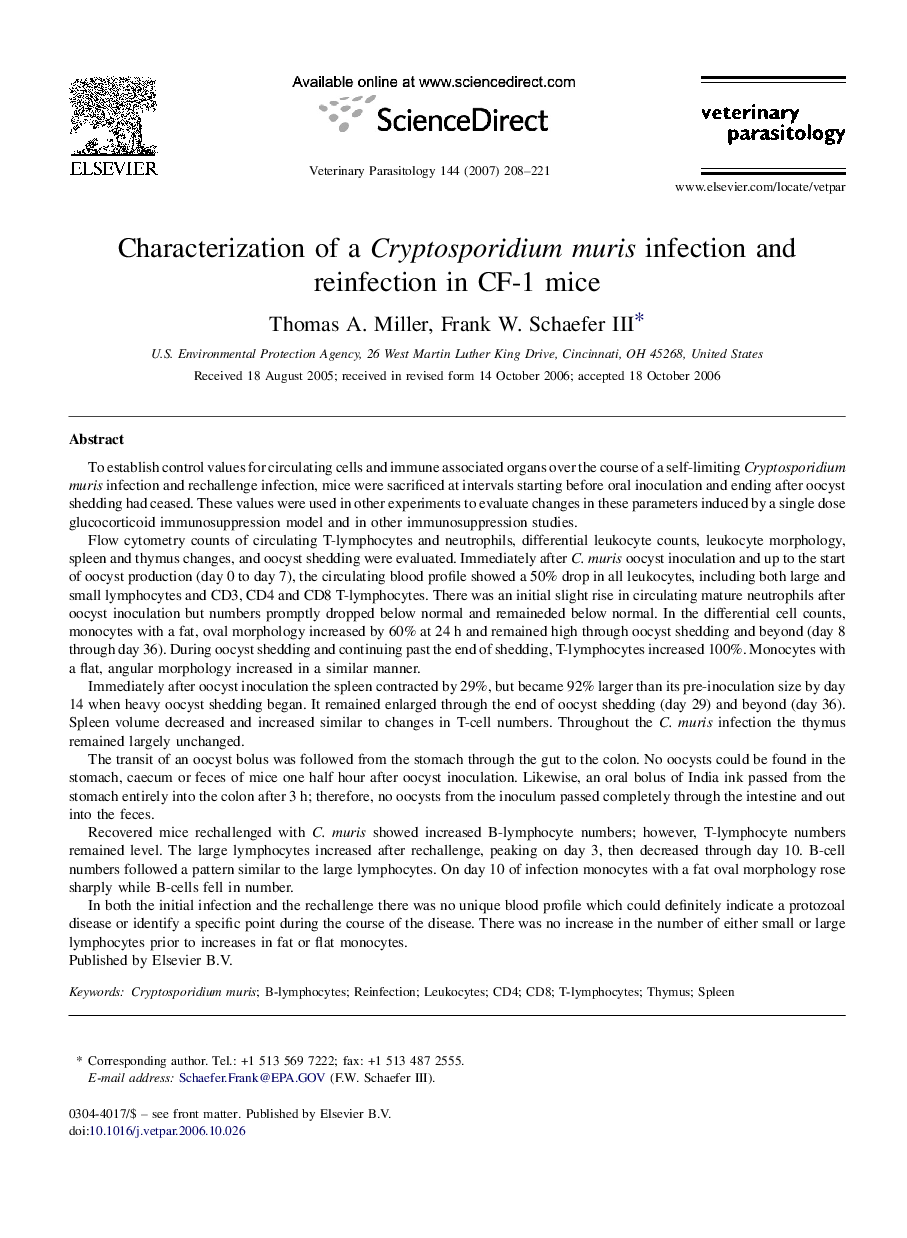| کد مقاله | کد نشریه | سال انتشار | مقاله انگلیسی | نسخه تمام متن |
|---|---|---|---|---|
| 2472115 | 1555785 | 2007 | 14 صفحه PDF | دانلود رایگان |

To establish control values for circulating cells and immune associated organs over the course of a self-limiting Cryptosporidium muris infection and rechallenge infection, mice were sacrificed at intervals starting before oral inoculation and ending after oocyst shedding had ceased. These values were used in other experiments to evaluate changes in these parameters induced by a single dose glucocorticoid immunosuppression model and in other immunosuppression studies.Flow cytometry counts of circulating T-lymphocytes and neutrophils, differential leukocyte counts, leukocyte morphology, spleen and thymus changes, and oocyst shedding were evaluated. Immediately after C. muris oocyst inoculation and up to the start of oocyst production (day 0 to day 7), the circulating blood profile showed a 50% drop in all leukocytes, including both large and small lymphocytes and CD3, CD4 and CD8 T-lymphocytes. There was an initial slight rise in circulating mature neutrophils after oocyst inoculation but numbers promptly dropped below normal and remaineded below normal. In the differential cell counts, monocytes with a fat, oval morphology increased by 60% at 24 h and remained high through oocyst shedding and beyond (day 8 through day 36). During oocyst shedding and continuing past the end of shedding, T-lymphocytes increased 100%. Monocytes with a flat, angular morphology increased in a similar manner.Immediately after oocyst inoculation the spleen contracted by 29%, but became 92% larger than its pre-inoculation size by day 14 when heavy oocyst shedding began. It remained enlarged through the end of oocyst shedding (day 29) and beyond (day 36). Spleen volume decreased and increased similar to changes in T-cell numbers. Throughout the C. muris infection the thymus remained largely unchanged.The transit of an oocyst bolus was followed from the stomach through the gut to the colon. No oocysts could be found in the stomach, caecum or feces of mice one half hour after oocyst inoculation. Likewise, an oral bolus of India ink passed from the stomach entirely into the colon after 3 h; therefore, no oocysts from the inoculum passed completely through the intestine and out into the feces.Recovered mice rechallenged with C. muris showed increased B-lymphocyte numbers; however, T-lymphocyte numbers remained level. The large lymphocytes increased after rechallenge, peaking on day 3, then decreased through day 10. B-cell numbers followed a pattern similar to the large lymphocytes. On day 10 of infection monocytes with a fat oval morphology rose sharply while B-cells fell in number.In both the initial infection and the rechallenge there was no unique blood profile which could definitely indicate a protozoal disease or identify a specific point during the course of the disease. There was no increase in the number of either small or large lymphocytes prior to increases in fat or flat monocytes.
Journal: Veterinary Parasitology - Volume 144, Issues 3–4, 31 March 2007, Pages 208–221